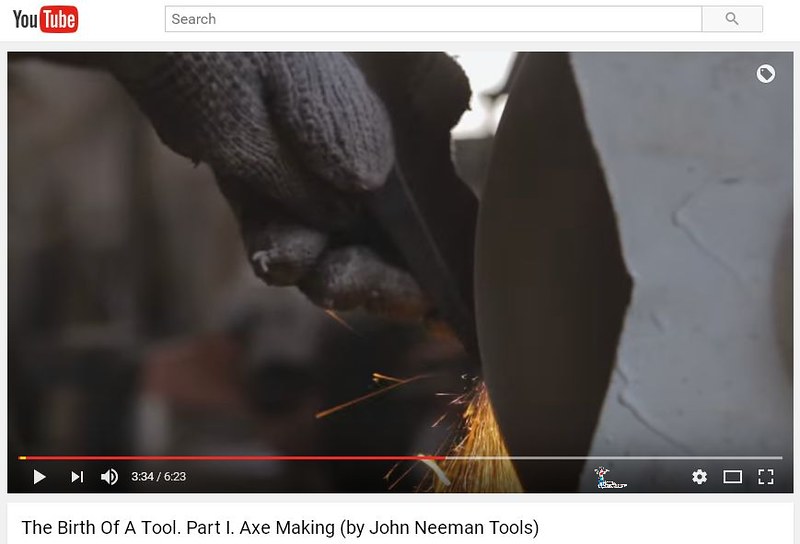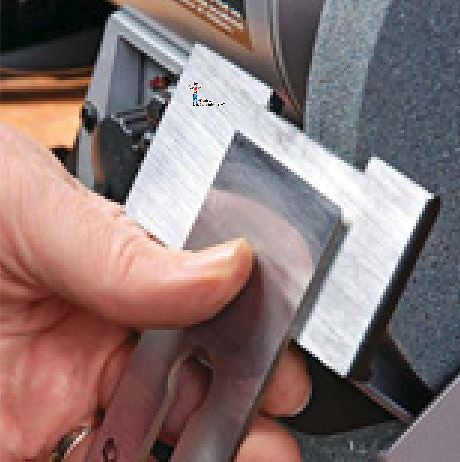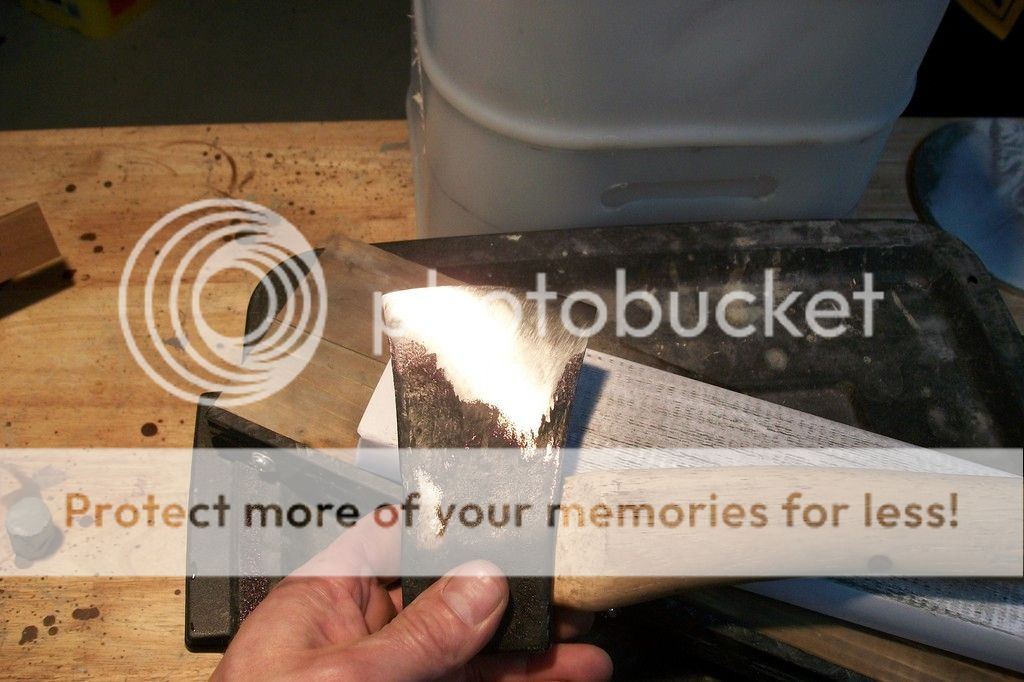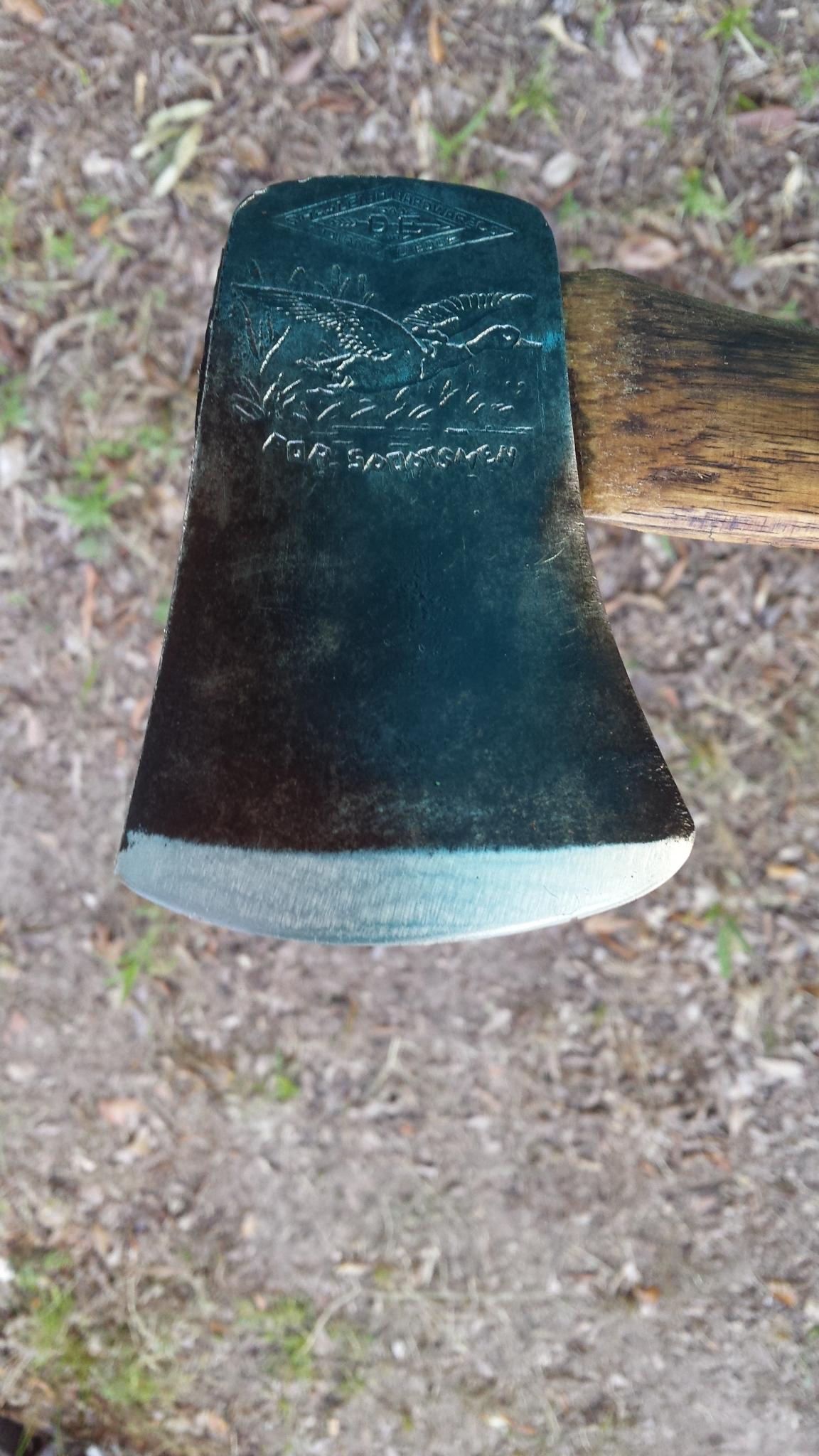-
The BladeForums.com 2024 Traditional Knife is available! Price is $250 ea (shipped within CONUS).
Order here: https://www.bladeforums.com/help/2024-traditional/
You are using an out of date browser. It may not display this or other websites correctly.
You should upgrade or use an alternative browser.
You should upgrade or use an alternative browser.
What Did You Sharpen Today?
- Thread starter marbat
- Start date
- Joined
- Mar 10, 2011
- Messages
- 2,690
. . . I have an 8'' bench grinder and try to stay away from it for all the obvious reasons.
Could you please provide the list of these "obvious reasons" for not using a bench grinder? They are not known to me.
Thanks,
Bob
------------------------------------------------------------------
Axe:

Plane iron:

Chisel:

- Joined
- Mar 10, 2011
- Messages
- 2,690
Rick, IMHO, you've got it. With that attitude you will never burn anything.. . . and not in such a hurry to get a job done. . .

Being more cautious than you need to is no sin. Use a light touch and keep the tool you are sharpening moving. Keep taking shallow passes until you get to your line. Put an open container of water next to the grinder and quench often. Even after each pass: move lightly across the wheel and quench, lightly across the wheel and quench, lightly across the wheel and quench, etc., etc.
Stay cool,
Bob
Last edited:
Update: I just spent 20 minuets on the grinder and I have to say It's looking good, thanks again to you and everyone's input. I'll post up some pics later right now I have to get ready for an Amateur Radio Net, and I'm net control and we meet every Tuesday 1900 PDT on the local 2 meter repeater.
Rick
Rick
- Joined
- Jul 31, 2002
- Messages
- 2,954
Looks like you're already starting to get the hang of it.
Further tips-
You can use more pressure when you're grinding further back from the edge on the bevel. Thicker steel won't overheat very quickly like the very edge will, so it's safer to start further back until you get into the groove & figure out the proper feel. For that matter, for those worried about burning their temper, ya don't have to use the bench grinder to sharpen all the way to the edge at all. If you've got a thick bit that needs reprofiling, just use the grinder to thin it out behind the edge, and finish with a file or stone- this can still save hours of work.
A good sized stainless steel or plastic bowl of water big enough to dip the head in is good. Add a drop of dish soap to keep nasty stuff from growing in it. A spritz bottle is often less mess though. A wet rag can also work, but I'm always concerned about using rags around a running grinder.
Our old silage chopper had its own sharpening stone built in, but it cracked & had to be replaced. Of course I kept the halves of the old one. Picture a 20 pound stone over 2 feet long & 3 or 4 inches wide, with grit about as coarse as the rock salt on top of a soft pretzel. It will hog off steel very quickly. Something like that may be an option for those who refuse to use power tools, yet can't get a file to work.
Further tips-
You can use more pressure when you're grinding further back from the edge on the bevel. Thicker steel won't overheat very quickly like the very edge will, so it's safer to start further back until you get into the groove & figure out the proper feel. For that matter, for those worried about burning their temper, ya don't have to use the bench grinder to sharpen all the way to the edge at all. If you've got a thick bit that needs reprofiling, just use the grinder to thin it out behind the edge, and finish with a file or stone- this can still save hours of work.
A good sized stainless steel or plastic bowl of water big enough to dip the head in is good. Add a drop of dish soap to keep nasty stuff from growing in it. A spritz bottle is often less mess though. A wet rag can also work, but I'm always concerned about using rags around a running grinder.
Our old silage chopper had its own sharpening stone built in, but it cracked & had to be replaced. Of course I kept the halves of the old one. Picture a 20 pound stone over 2 feet long & 3 or 4 inches wide, with grit about as coarse as the rock salt on top of a soft pretzel. It will hog off steel very quickly. Something like that may be an option for those who refuse to use power tools, yet can't get a file to work.
Could you please provide the list of these "obvious reasons" for not using a bench grinder? They are not known to me.
I'll take a stab at this... First, it takes off a TON of metal/material. Second, it can get hot enough to ruin the temper. Ideally, any sharp tool/blade would be taken out from proper storage, checked for sharpness, used, cleaned, checked for sharpness at the end of the job, re sharpened if needed, and then properly stored. That said, there are circumstances where brute force (grinding wheel) is nice --like starting or re-shaping an edge on an old, neglected or abused tool. But it should be a start, and then finished properly, similar to how we would use a rasp or draw knife to start shaping a haft and then finish up with sandpaper.
- Joined
- Mar 10, 2011
- Messages
- 2,690
I think you are saying that use of a bench grinder has limits. :thumbup:I'll take a stab at this... First, it takes off a TON of metal/material. Second, it can get hot enough to ruin the temper. Ideally, any sharp tool/blade would be taken out from proper storage, checked for sharpness, used, cleaned, checked for sharpness at the end of the job, re sharpened if needed, and then properly stored. That said, there are circumstances where brute force (grinding wheel) is nice --like starting or re-shaping an edge on an old, neglected or abused tool. But it should be a start, and then finished properly, similar to how we would use a rasp or draw knife to start shaping a haft and then finish up with sandpaper.
A bench grinder is just a tool. Tools in themselves don't cause problems. Only the operator can cause a problem.
If somebody says to me "NEVER use a bench grinder on your axe, you will ruin it", they might as well say "You are too stupid and clumsy to use a power tool".
Bob
True Value had them on sale for 6$ and it gives me a fairly big flat surface to rough things out. I have an 8'' bench grinder and try to stay away from it for all the obvious reasons.
1215 this is where "the obvious reasons" started and has been since addressed, I think you took it a little out of context.
Rick
- Joined
- Apr 26, 2013
- Messages
- 771
Finished convexing and polishing out the edge on my new-to-me Winkler combat axe 


1215 this is where "the obvious reasons" started and has been since addressed, I think you took it a little out of context.
Rick
I'm fixing up a nice, but unstamped brush axe/ ditch blade for a family member. They said it wasn't working well, and it wasn't. It was rusty and dull. I dropped it in vinegar, and then wire-wheeled it followed by WD-40. I put a thin green/grass edge on the inside curve edge, and a more obtuse but still shaving sharp chopping/root/dirt edge on the back. I saved the handle, painted the brackets, and will have to get new hardware as I had to cut the old bolts off.
It'll be a slashing machine when I'm done.
Now I need to figure out how to protect these edges as sheaths for these aren't readily available.

It'll be a slashing machine when I'm done.
Now I need to figure out how to protect these edges as sheaths for these aren't readily available.

- Joined
- Aug 21, 2013
- Messages
- 3,898
I'm fixing up a nice, but unstamped brush axe/ ditch blade for a family member. They said it wasn't working well, and it wasn't. It was rusty and dull. I dropped it in vinegar, and then wire-wheeled it followed by WD-40. I put a thin green/grass edge on the inside curve edge, and a more obtuse but still shaving sharp chopping/root/dirt edge on the back. I saved the handle, painted the brackets, and will have to get new hardware as I had to cut the old bolts off.
It'll be a slashing machine when I'm done.
Now I need to figure out how to protect these edges as sheaths for these aren't readily available.

I, for one, would like to see it when you get it finished
I, for one, would like to see it when you get it finished
Will do! I'll post it up for sure. The haft, which was grey and dry, has turned a gorgeous reddish brown now that i'ts been getting some BLO. It should be a very nice looking and useful cutter.
- Joined
- Jun 4, 2010
- Messages
- 6,642
Here's my current go-to hatchet for camping. Picked up a year or two ago at a hardware store in the Adirondacks hung pretty straight, it had no label, looks like it might be a True Temper. Head stamp is US 14. I'll probably rehang it some day as it has a small knot in the haft, but its a pretty small one and I have too many projects already...
I had to thin it down pretty good to get it nice. After my last canoe trip I figured it could stand a little more meat taken off, nothing crazy. In the second pic you can still see some of the file marks running near parallel to the bit above the polish line, and some file marks on the upper cheek region.
Heck of a chopper for its size, just under 2 lbs total.


I had to thin it down pretty good to get it nice. After my last canoe trip I figured it could stand a little more meat taken off, nothing crazy. In the second pic you can still see some of the file marks running near parallel to the bit above the polish line, and some file marks on the upper cheek region.
Heck of a chopper for its size, just under 2 lbs total.







